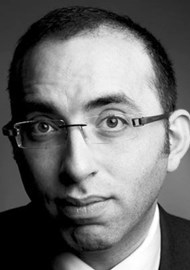This paper sought to determine whether facelifting in patients with prior radiotherapy for head and neck cancer was safe. This study focuses on a small sample of 16 patients matched to controls who were retrospectively assessed for major surgical morbidity. This retrospective study showed those previously irradiated had significantly higher incidence of complications. Although sub-group analysis yielded very small groups, there is a suggestion subcutaneous facelifting significantly correlated to wound dehiscence versus sub SMAS or sub-periosteal techniques. This study also suggests the time interval between radiotherapy and rhytidectomy did not correlate with the rate of complications. Unfortunately no data was provided on radiation dose, primary radiation site and whether the need for radiation related to malignancy of the skin. These factors definitely contribute to how the facial tissues will behave post-irradiation and this information would have been useful. Particularly as one patient mentioned in the discussion was actually a cranial paediatric tumour that would not normally fall under the umbrella of head and neck cancer (although I appreciate it is the head!) There is no doubt head and neck cancer survival is increasing therefore prospective aesthetic patients will of course exist. It is right to begin investigating the sequalae of aesthetic surgery in these patients because we know counselling these patients can be difficult.




